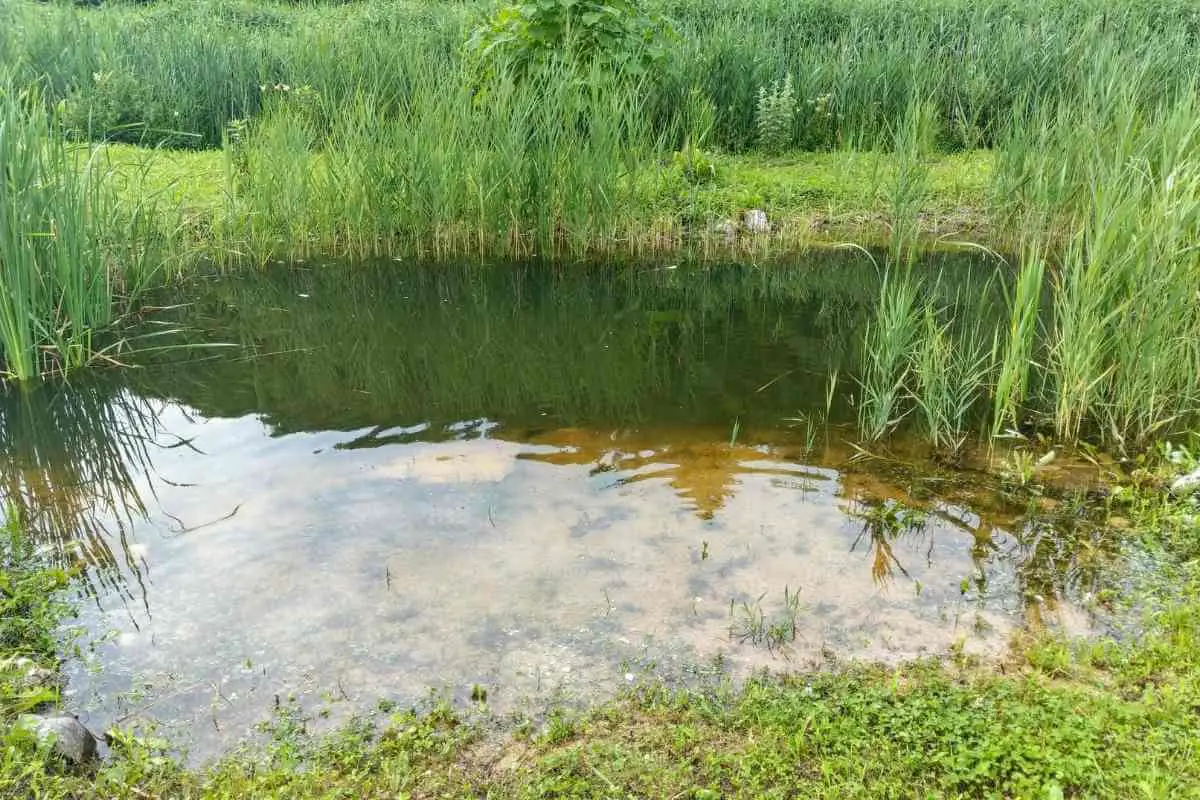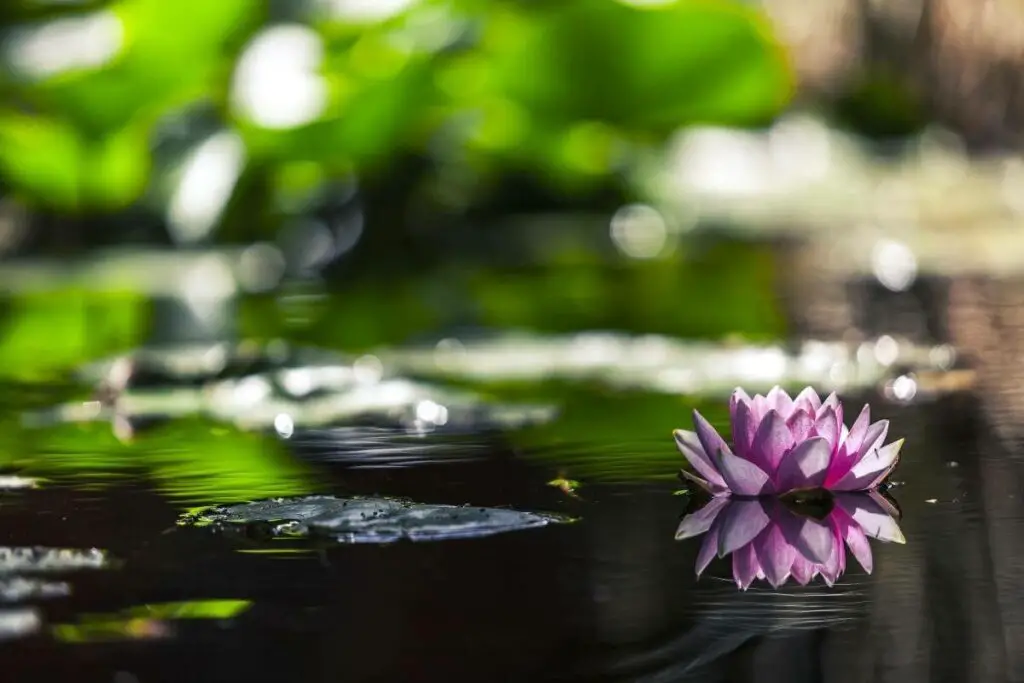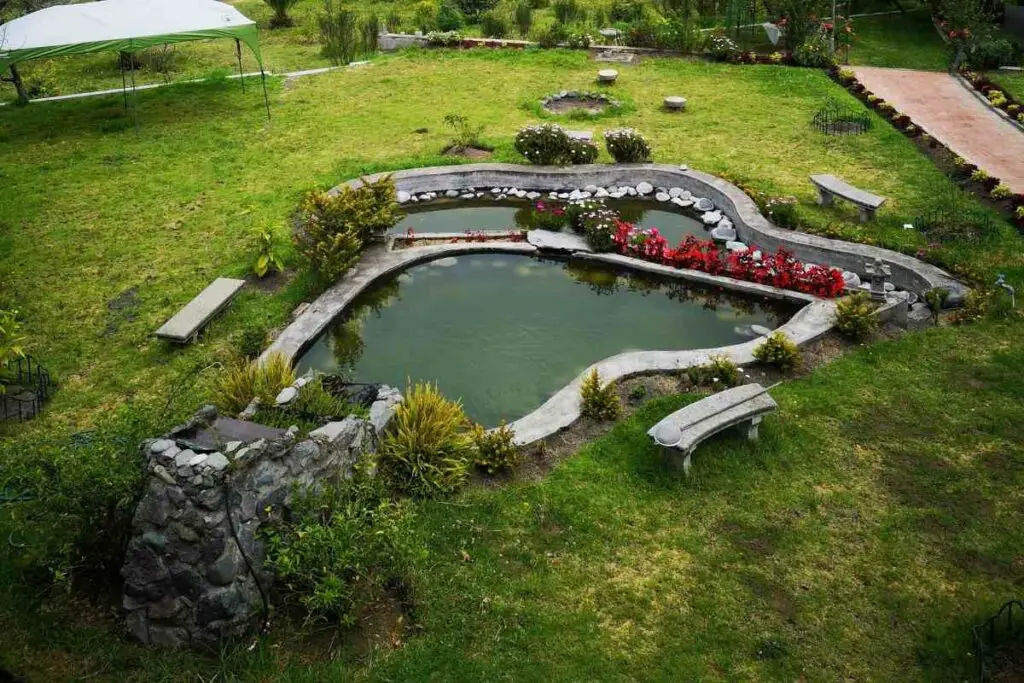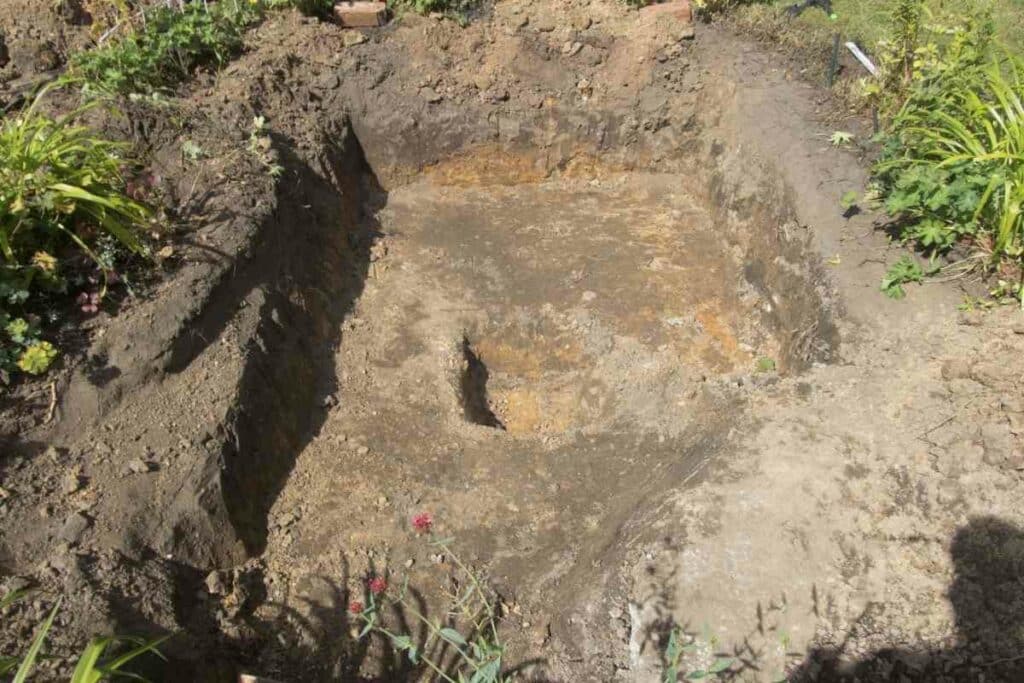A natural pond is a pond that virtually maintains itself, free of a filter.
Of course, without an electrical filter, a pond must have some sort of a natural filter!
So, how do natural ponds stay clean? There are a few ways that this can be accomplished.
Let’s take a look!
Don’t Overstock
First and foremost, when it comes to keeping a natural pond clean, you’ll want to make sure not to overstock!
If you’ve got too many pond critters, it will be simply impossible to keep up with the waste.
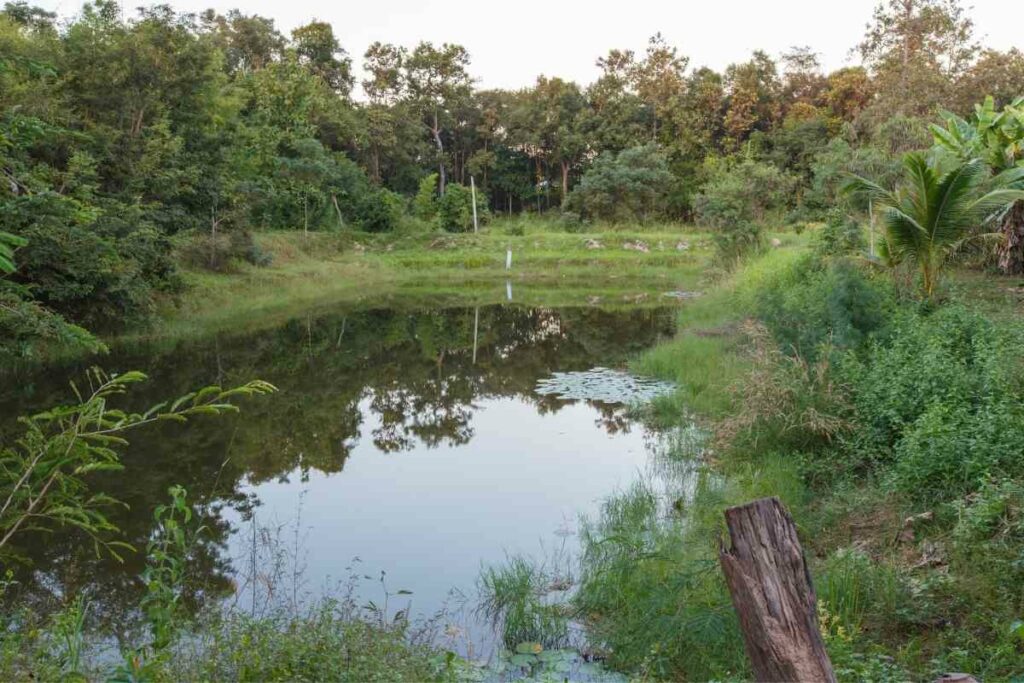
Not only that but there’s unlikely to be enough air to go around. The combination virtually guarantees a dirty pond, and your pond wildlife is also certain to get sick!
Instead, pick each critter with care; include some:
- decorative koi
- mosquitofish (to keep these pond-loving pests at bay)
- and maybe some frogs
And leave it at that.
If you’d like to keep more critters in your natural pond, you could also always make it bigger!
Aerator
Most ponds (and pond critters) will do best with an aerator.
While ponds can filter themselves okay (and even oxygenate themselves, if they have plants), it is sure to help water life thrive to have an aerator!
As their name implies, these provide a steady supply of fresh, oxygenated air!
As a result, flora will grow faster and greener, and fauna will be healthier and livelier!
Monitor Water Level
Sometimes, ponds need replenishing with fresh water.
Just as seen with a standing up of liquid, water evaporates quickly, and constantly. Fortunately, your pond is likely to be replenished naturally, with rainfall.
This being said, it’s still smart to monitor the water level, especially in hot or dry weather!
Most likely, water-marks left on the side as it lowers will be an indicator.
Keep In Mind: If your pond decreases by more than a few inches, you may wish to use a hose or pump to replenish the flora and fauna with fresh water!
The More Plants the Better (Within Reason)
Plants are part and parcel when it comes to keeping natural ponds clean; they are a natural source of oxygen, and, what’s more, they consume debris and degrading matter!
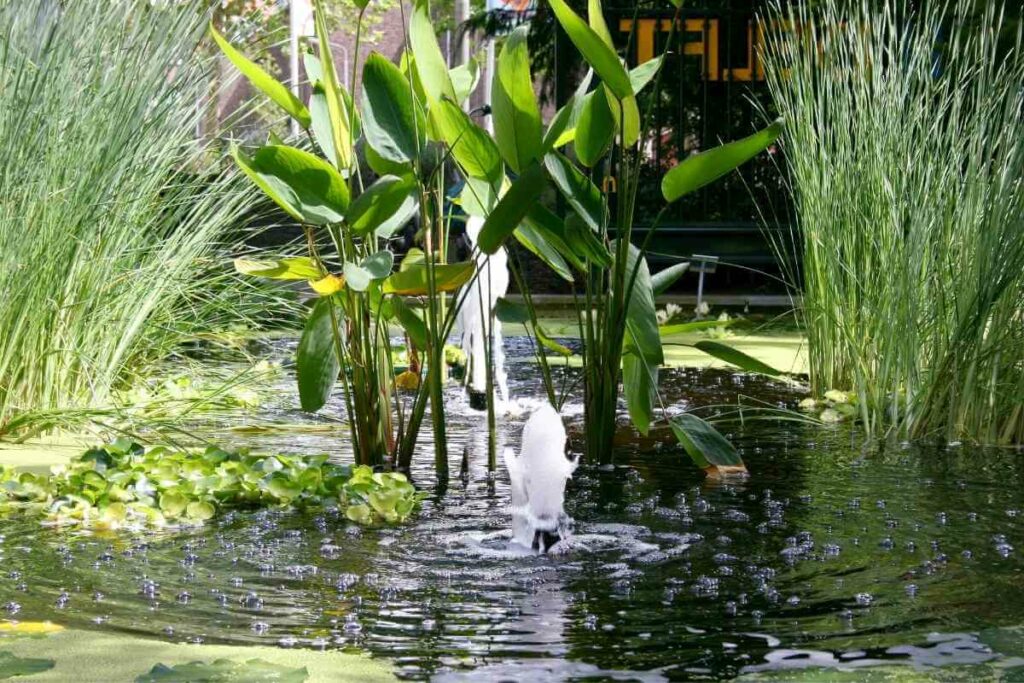
Of course, as with wildlife, too many plants can result in a crowded, potentially dirty environment.
Without enough oxygen to go around, and with more plant debris, the health of plants and wildlife alike could be put at risk!
This aside, when it comes to keeping a natural pond clean, plenty of plants are often called for. These include hardy, water-loving varieties.
Some plants even provide more oxygen than others – such as those listed below:
- Arrowhead
- Hornwort
- Waterweed
- Water Sprite
- Eel Grass
- Water Crowsfoot
- Micro Sword
- Water Wisteria
- Red Rotola
- Horse/Mare’s Tail
Clean Debris From Your Pond on the Regular
Actually, cleaning your pond too often can do more harm than good, messing with the natural balance of the water.
Instead, you will want to do only light cleaning regularly. This means removing things like leaves, bark, trash, that sort of thing.
Otherwise, these can all too easily rot, or simply clog up the water. This being said, you’ll want to do the cleaning gently and carefully.
In a Natural Pond: it’s best not to overly disturb the balance of the soil and/or water!
Deep-Clean Your Pond Once a Year
It is advisable to deep-clean your pond roughly once a year.
This is to get at any deeply-rooted scum or any debris that may have been hidden away.
While a natural pond is meant to primarily maintain itself, this yearly cleaning is often necessary to keep everything in check!
So, How Do You Deep-clean a Natural Pond?
With a gentle but firm hand.
During the process, if possible, you may want to rehome any pond critters (temporarily) to a tank.
This will allow you to fully remove the sediment and any waste it may harbor! Once the sediment is out of the way, you can use a hose to spray any scum from the sides and bottom of the pond.
Feel free to leave some algae behind, as a balanced amount of it can actually be healthy for a pond (providing O2).
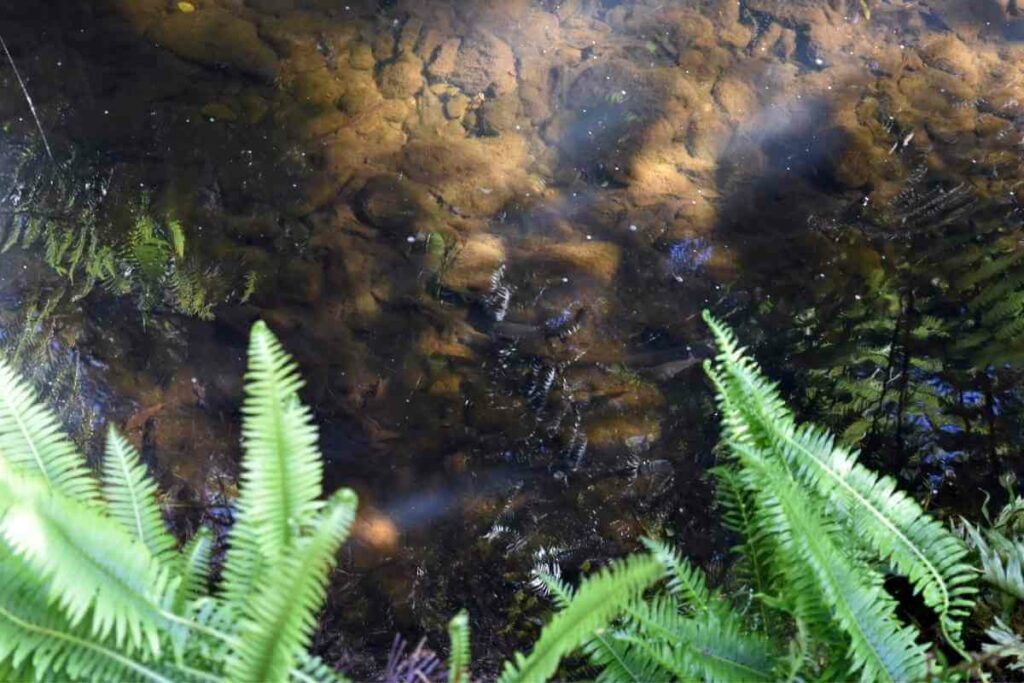
After this, spray down any rocks, tubing, or decor.
Once everything is sparkling:
- You can place fresh, new sediment down on the pond floor
- Then, replace any objects you’ve taken out for cleaning, and – if applicable – restart your aerator.
- Once everything has settled, you can return any critters you’ve removed back in the water!
Give Your Pond PH a Look
Last but not least, you’ll want to consider your pond’s pH level (i.e., its acidity vs alkalinity).
If the water is too acidic or too alkaline, pond flora and fauna will start to become uncomfortable and stressed.
If the level is too far from the recommended, their health will seriously suffer (with alkalosis and acidosis becoming a life-threatening risk).
Most plants and animals are comfortable in a pH range of 6-9.
In Fact: The natural pH of fish is around 7.4, so, as close to this as possible can be ideal. This will help keep any health issues in check!
Remove Fish Food Promptly
One of the main potential causes of illness in ponds is fish food.
If you have fish in your pond, by all means, feed them generously, but make sure that there is not typically anything leftover.
This can rot quickly, and ultimately dirty the water, or worse, make some pond critters sick!
Final Thoughts
So, if you were wondering, ‘how do natural ponds stay clean?’ you’ve got your answer!
They stay clean through a combination of plants, regular debris removal, and monitoring the pH and overall water level.
If you’ve got a natural pond, we wish you the best of luck!
Also Helpful
- Top 10 Best Wildlife Pond Edging Ideas
- The Best Ways to Hang Wind Chimes Indoors and Outdoors
- 7 Ways to Improve Biodiversity at Home or in Urban Areas
- What Should I Put in the Bottom of My Wildlife Pond?
- Backyard Oasis With Pool: Creating a Relaxing Retreat in Your Backyard
- How to Find Pond Leak (Quick Method to Find the Leaks)
- Pool Ledge Lounger – Complete Buyers Guide
- Do Garden Ponds Overflow When It Rains
- How To Fill A Pond With Water (Complete Guide)
